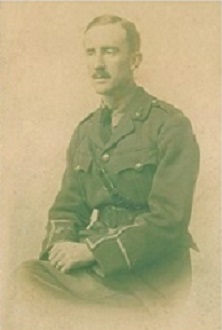
A Great War Story
In November 1915 a young, newly-commissioned Second Lieutenant in the Lancashire Fusiliers arrived at Rugeley Camp on Cannock Chase, Staffordshire, and in December was transferred with his battalion to the nearby Brocton Camp. Whilst he was patriotic and wanted to ‘do his bit’ for his country like others of his generation, he was bored by military routines and distracted from his desire to write the stories that had been forming in his mind since his school days in Birmingham and his student days at Oxford.
In March 1916 this young man married his childhood sweetheart and brought his bride to live in the village of Great Haywood quite close to Brocton Camp. He regularly walked across the Chase and through Shugborough Park to be with his new wife and these days were to have a considerable influence on him and to feature in his later stories.
In June 1916 this young officer was sent to France as a Battalion Signals Officer and witnessed the first stages of the Battle of the Somme, in which he was soon more closely involved. He witnessed the most terrible sights of new weaponry, mass killings and horrific injuries, events that left a deep impression on him and were to reappear in his later writings.
In December 1916 this rather traumatised young soldier returned to Great Haywood and spent almost three months there in a cottage with his wife recovering from the horrors of the Somme and a severe bout of trench fever. It was here that at last he had the opportunity to write the stories that he had long wanted to write. These stories became part of a collection that later were to evolve into a much more famous novel.
Illness prevented this young author from returning to the Front which probably saved his life as most of his battalion was wiped out in a later offensive. If he had been killed, one of the greatest works of literature would not have been written. The name of this man was, of course, John Ronald Reuel Tolkien, and the book was The Lord of the Rings.
David Robbie
